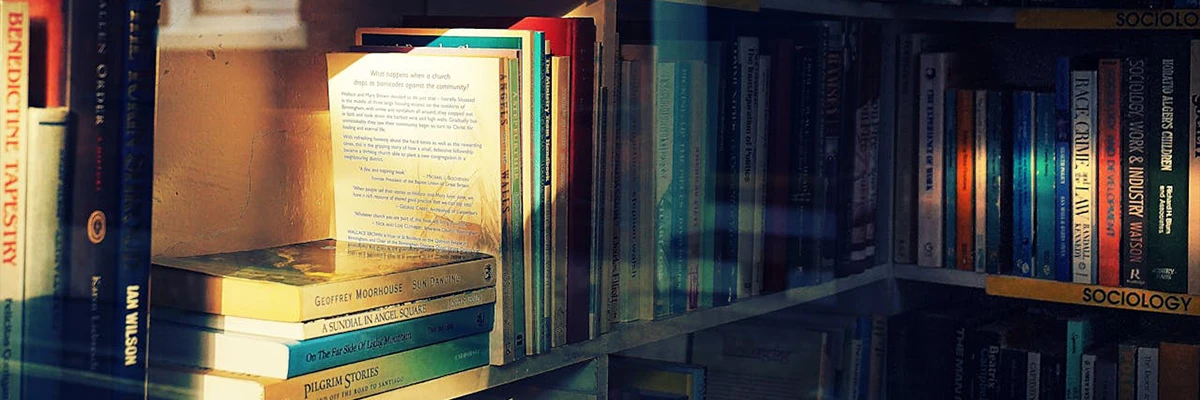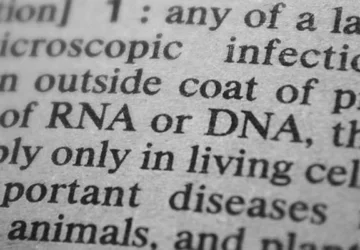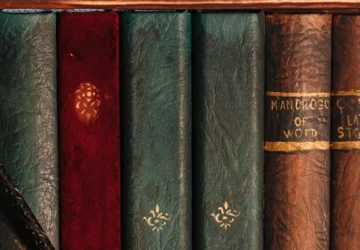
What makes a biography “great”?
The simple answer is “accuracy.” A good biography, we assume, is one that gets all the facts right. It has the correct dates, the verified quotes, the detailed footnotes.
This answer is true, but it is incomplete. It is the answer for a historian, not a reader.
A simple collection of facts is a chronicle. It is a timeline. It is not a life. A great biography does not just tell you what a person did. It explains why they did it.
The best biographies of influential figures are not just works of history. They are profound works of psychological portraiture. They are investigations into human nature. They seek to understand the subject’s inner world their fears, their ambitions, their flaws, and their core motivations.
They show how that inner world, in collision with the events of their time, managed to change our outer world.
We are not just looking for a history lesson. We are looking to understand the mechanics of genius, power, and influence. The following five books are masterpieces not just because they are meticulously researched, but because they succeed in the almost impossible task of resurrecting a human soul onto the page.
The Archetype: “The Life of Samuel Johnson” by James Boswell (1791)

We cannot talk about biography without starting here. This is the book that invented the genre as we know it. Before Boswell, biography was often just a dry recitation of a great man’s accomplishments.
Boswell, in contrast, was a revolutionary. He believed that the details of a man his tics, his prejudices, his private conversations, his moments of doubt were the true keys to his character. He was, in essence, the first psychological profiler in literature.
Instead of just telling us that Samuel Johnson (the great 18th-century writer, critic, and dictionary-maker) was a genius, Boswell shows us. He spent decades following Johnson around, meticulously recording his conversations in his journal.
The result is a book that is almost shockingly modern. It is not a hagiography. Boswell shows us Johnson in all his glorious contradiction: a brilliant intellectual who was also deeply superstitious, a man of profound moral conviction who was terrified of death, a gruff and intimidating public figure who was, in private, capable of immense kindness.
What Makes It a Masterpiece: This book’s thesis is that character is revealed in conversation. Boswell’s method, which was radical at the time, was to let the man speak for himself. We don’t just learn about Johnson; we get to know him. We are in the room with him. When Johnson famously says, “Patriotism is the last refuge of a scoundrel,” or “He who makes a beast of himself gets rid of the pain of being a man,” we are not just reading a quote. We are hearing the culmination of a debate that Boswell has carefully set the stage for. It is the first biography to understand that “what” a person did (write a dictionary) is far less interesting than who they were.
The Epic of Power: “The Power Broker” by Robert Caro (1974)

If Boswell invented the psychological biography, Robert Caro perfected the biography of power. This 1,300-page behemoth is not just the story of a man. It is a textbook on the mechanics of modern political power.
Its subject, Robert Moses, is a man you have likely never heard of. And that is the point. Moses was never elected to any office. Yet, for 44 years, he was arguably the single most powerful man in New York. He built virtually every major bridge, parkway, and public project that defines the modern city.
The book is a masterpiece of investigative journalism. But its core is a profound psychological question: How does a man who starts as a brilliant, idealistic reformer, dedicated to public service, transform into a ruthless, power-mad tyrant who disdains the very public he claims to serve?
What Makes It a Masterpiece: Caro’s genius is in showing that power reveals, it does not corrupt. Moses didn’t change; he simply became more of who he always was. Caro’s famous thesis is that “power doesn’t corrupt, power exposes.” The book is a slow-motion study of how “the end justifies the means” becomes a moral cancer. We see Moses build beautiful parks, but we also see him deliberately build the parkway bridges to Long Island too low for public buses to pass under, explicitly to keep poor, Black communities from accessing his beaches. Caro’s research is so deep, his explanation of how Moses manipulated bonds, laws, and public opinion so masterful, that you finish the book not just understanding Moses, but understanding the city, the country, and the very nature of political ambition. It is one of the best biographies of influential figures ever written.
The Literary Life: “Oscar Wilde” by Richard Ellmann (1987)

This Pulitzer Prize-winning book is the definitive model for all literary biography. Its subject, Oscar Wilde, is a man who is easy to caricature. He is the flamboyant “dandy,” the “wit” full of clever quotes.
Richard Ellmann’s task was to find the man behind the mask. Wilde famously said that he “put his genius into his life; he put only his talent into his works.” Ellmann takes this quote as his thesis, arguing that Wilde’s life was his greatest work of art.
The book is an act of profound empathy. It does not just chronicle Wilde’s plays and his infamous trial. It paints a portrait of a man who was, at his core, a profound and serious moralist, an artist whose entire public persona was a radical critique of a rigid, hypocritical Victorian society.
Ellmann shows that Wilde’s tragedy was not just that he was “caught.” It was that his philosophy of individualism and self-creation was, in the end, destroyed by the very society he sought to subvert.
What Makes It a Masterpiece: Ellmann’s writing is as witty, elegant, and intelligent as his subject. He is one of the few biographers whose prose can actually stand alongside the person he is writing about. He brilliantly connects Wilde’s life to his art, showing how The Picture of Dorian Gray was a prophecy and The Importance of Being Earnest was not just a farce, but a razor-sharp deconstruction of social masks. The book is a heartbreaking study of a genius, but it is also a powerful argument for art as a serious, world-changing force. It is the gold standard for what makes a good biography of an artist.
The Portrait of Character: “Truman” by David McCullough (1992)

David McCullough was a master of a specific kind of biography: the one that argues character is destiny. His Pulitzer-winning “Truman” is perhaps his greatest achievement.
Its subject, Harry S. Truman, is one of the most unlikely “influential figures” in history. He was a failed haberdasher, a small-time machine politician from Missouri, a man so plain and unassuming he was chosen as Vice President precisely because he was “safe.”
Then, Franklin Roosevelt died, and this “common man” was suddenly handed the keys to the world. He was now responsible for ending World War II, the decision to use the atomic bomb, the Marshall Plan, the Cold War, and the Korean War.
The book’s core psychological question is: What happens when an ordinary man is confronted with extraordinary, world-ending responsibility?
What Makes It a Masterpiece: McCullough’s answer is that Truman’s “ordinariness” was his superpower. Because he was a plain-spoken, deeply-read, and fundamentally decent man, he relied not on “genius,” but on a profound sense of duty and a clear moral compass. McCullough’s genius is his narrative skill. He makes you feel the staggering, crushing weight of the decisions Truman had to make. You are in the room with him at Potsdam, feeling his insecurity as he stands next to the giants of Churchill and Stalin. You feel the agony of the decision to drop the bomb. McCullough argues that Truman’s influence came not from a complex ideology, but from a simple, iron-willed character. It is one of the best presidential biographies because it demystifies power, showing it as a series of brutal decisions made by a fallible, but principled, human being.
The Modern Architect: “Alexander Hamilton” by Ron Chernow (2004)

Before this book, Alexander Hamilton was, for most Americans, a face on the $10 bill. He was the “forgotten” founder, overshadowed by Washington and Jefferson.
Ron Chernow’s 800-page masterpiece did not just resurrect Hamilton. It re-engineered our understanding of modern America. This is a biography that had a seismic influence on culture, famously inspiring the musical “Hamilton.”
The book is a deep psychological dive into the “bastard, orphan, son of a whore” who, through sheer, manic, intellectual energy, willed a new nation into existence. Chernow’s thesis is that Hamilton was the true architect of the modern American state. While Jefferson was dreaming of a romantic, agrarian republic of farmers, Hamilton was busy building a system: a national bank, a federal credit system, a strong central government.
What Makes It a Masterpiece: Chernow’s skill is in making economics and political theory read like a high-stakes thriller. He shows that the abstract debates from the 1790s are the exact same debates we are having today. The core conflict in America between federal power and states’ rights, between urban finance and rural values was born in the bitter, personal, and brilliant rivalry between Hamilton and Jefferson. Chernow paints Hamilton as a tragic hero: an indispensable man whose arrogance and “fatal flaw” (his obsession with his own honor) led directly to his downfall. It is a brilliant study of how one man’s internal, psychological drive (his “non-stop” energy, his deep-seated fear of chaos and illegitimacy) became the blueprint for a global superpower.
Conclusion: The Life as a Lens
These five books are not just “life stories.” They are epic studies of power, creativity, character, and society.
They are the best biographies because their authors understood a fundamental truth: a life is not a list of accomplishments. A life is a lens.
By looking through the lens of Johnson’s mind, we understand the birth of modern intellectual life. By looking through Moses, we understand power. Through Wilde, we understand art. Through Truman, we understand character. And through Hamilton, we understand the very DNA of our modern world.
These books matter because they don’t just show us the past. They provide a blueprint for understanding the present, proving that the most powerful way to understand humanity is to understand one human, deeply.
Recommended for you

Preparing for Exams Using Books and Study Guides
It is the most dreaded and familiar ritual in academic life. It is 1 a.m. The exam is in eight hours. You are surrounded by a wall of open textbooks, and your eyes are scanning a highlighted page for the tenth time. You recognize the words. They feel familiar, like an old song. But when […]

What Is Close Reading and Why It Matters in Modern Education
We are drowning in words. We read more today than at any other point in human history. We scroll through articles. We skim headlines. We digest hot takes, social media posts, and endless comment threads. Our brains, rewired by the digital age, have become incredibly efficient at one specific skill. Skimming. We have trained ourselves […]

Molecular Biology and the Books That Defined It
What is life? For millennia, this question was the domain of priests, philosophers, and poets. It was a question of “spirit,” of a “vital spark,” of a “ghost in the machine.” Then, in the middle of the 20th century, a new group of thinkers took over. They were physicists, chemists, and biologists, and they approached […]

Sci-Fi vs Fantasy: Key Differences and What to Read
On the surface, the difference seems simple. One genre has spaceships and aliens. The other has dragons and elves. Science Fiction, we are told, is about the future, and Fantasy is about the past. This is a shallow analysis. And it is wrong. This “aesthetic” definition one of props and settings collapses immediately under any […]

Why Poetry Is Gaining Popularity Among Young Readers
There is a paradox in the modern literary world. For decades, the narrative has been consistent: literacy is in decline, attention spans are nonexistent, and young people, in particular, do not read. Book sales are stagnant. The novel is fighting for its life against Netflix and TikTok. And yet, in the middle of this supposed […]

Why Classic Literature Remains Relevant
Why do we still read them? This is a question that echoes through classrooms and book clubs. Why do we bother with books written 50, 100, or 200 years ago, by authors who are long dead? The world has changed. We have the internet. We have immediate, global communication. We have new problems, new technologies, […]

What Age Do Kids Start Reading and How to Support Their Learning
There is one question that lives in the back of nearly every new parent’s mind, a question often loaded with anxiety: “What age do kids start reading?” We see other children in preschool who can already identify words. We hear conflicting advice. We are programmed to look for a single, specific milestone age 5, age […]

Books Every Student Should Read Before University
University is not just the next step after school. It is a fundamentally different kind of intellectual environment. High school often rewards memorization and acceptance of authority. University, at its best, rewards questioning. It is not just about learning what to think; it is about learning how to think. It is about engaging with complex, […]